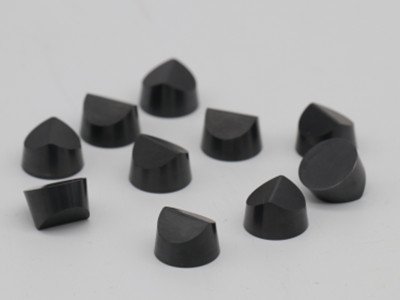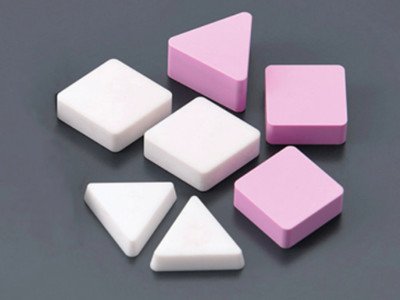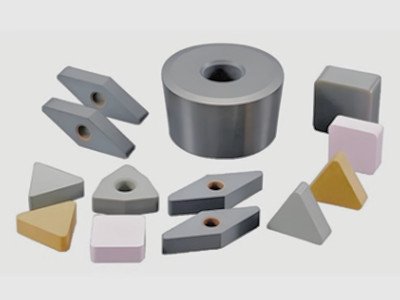13
Aug
In the fields of high-speed machining, dry cutting and processing of difficult materials, ceramic inserts are gradually replacing traditional carbide tools. Alumina-based ceramics and silicon nitride-based ceramics, due to their high temperature resistance, high hardness and chemical stability, have become key tools for the upgrading of the manufacturing industry.

High hardness: The hardness of alumina ceramic inserts is extremely high, enabling them to maintain the sharpness of the blade throughout the processing and resisting wear easily.
High temperature resistance: Alumina ceramic blades can maintain their hardness at temperatures as high as 1200°C or above, making them highly suitable for high-speed cutting.
Good chemical stability: They do not react chemically with iron-based materials, performing exceptionally well when processing materials such as cast iron.
2. Application Scenarios
Quenched Steel: Quenched steel with a hardness of HRC 55 or above (such as mold steel, bearing steel, etc.) can be processed using alumina ceramic inserts, which can achieve excellent surface finish and reduce subsequent grinding processes.
Cast Iron: In dry cutting or under minimal lubrication conditions, alumina ceramic inserts can be used for fine processing of cast iron parts such as engine blocks and brake discs, which can extend the tool life.
High-Temperature Alloys: Although alumina ceramic inserts perform well in continuous cutting of high-temperature alloys, they need to be used with caution in intermittent cutting or under conditions with significant vibration. This is because they have low toughness and are not suitable for intermittent cutting or large feed impacts.
It should be noted that when using alumina ceramic inserts, intermittent cutting should be avoided as they have low toughness and are not suitable for intermittent cutting or large feed impacts. Additionally, these inserts require sufficient rigidity of the machine tool to reduce vibration and impact.

High toughness: The toughness of silicon nitride ceramic inserts is much higher than that of alumina ceramic inserts, with strong impact resistance, suitable for intermittent cutting and high-vibration working conditions.
Good thermal stability: Silicon nitride ceramic inserts can maintain their performance at temperatures up to 1400°C, with extremely strong thermal shock resistance.
Better thermal conductivity: Compared to alumina ceramic inserts, silicon nitride ceramic inserts have better thermal conductivity, which helps with heat dissipation.
2. Application Scenarios
Cast Iron: The silicon nitride ceramic cutting inserts perform exceptionally well (in intermittent processing) when machining cast iron parts such as cylinder heads and crankshafts. Even under conditions with significant vibration, they can maintain a long tool life.
Nickel-based Alloys: In applications such as the rough turning of the outer circle of aviation turbine discs, the silicon nitride ceramic cutting inserts can effectively meet the rough processing requirements of high-temperature alloys.
Composite Materials: When processing composite materials such as carbon fiber reinforced polymers (CFRP), the silicon nitride ceramic cutting inserts can avoid delamination issues and maintain sharp cutting edges.
1. Material Hardness
High-hardness materials: Such as hardened steel, cast iron, etc. Preferentially select alumina ceramic inserts.
High toughness requirements: Such as nickel-based alloys, composite materials, etc. Preferentially select silicon nitride ceramic inserts.
2. Processing Conditions
Continuous cutting: Alumina ceramic inserts are suitable for high-speed continuous cutting.
Interrupted cutting: Silicon nitride ceramic blades are more suitable for interrupted cutting and situations with greater vibration.
3. Cost
Mass production: If long-term stable processing is required, the long lifespan of silicon nitride ceramic inserts can bring higher cost-effectiveness.
Small batch or experimentation: Alumina ceramic inserts may be more economical, especially in situations where processing conditions are relatively stable.








